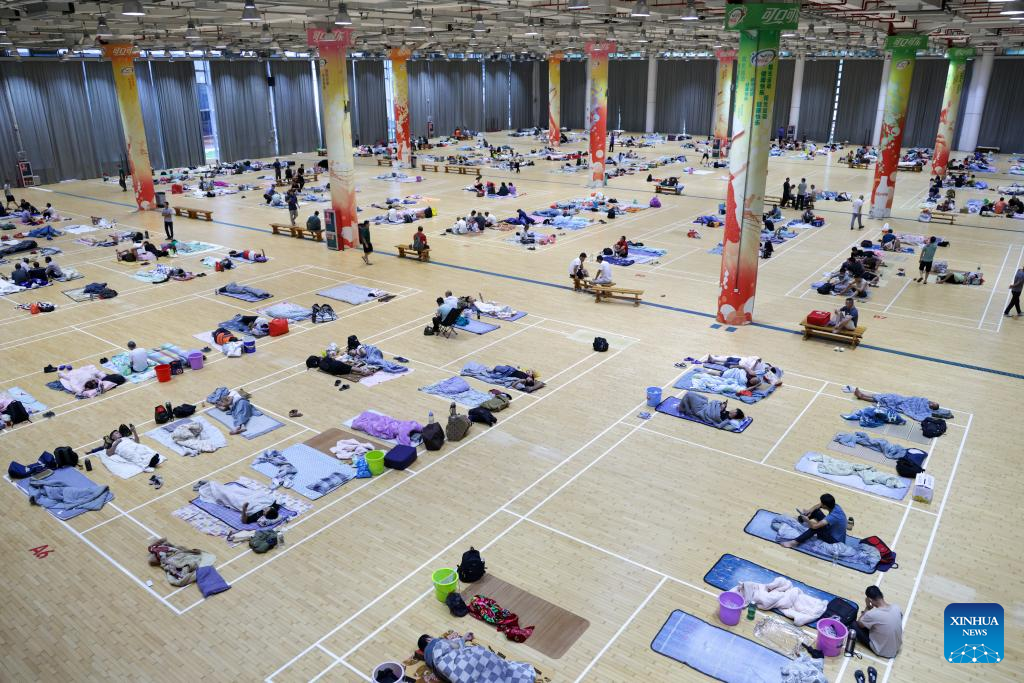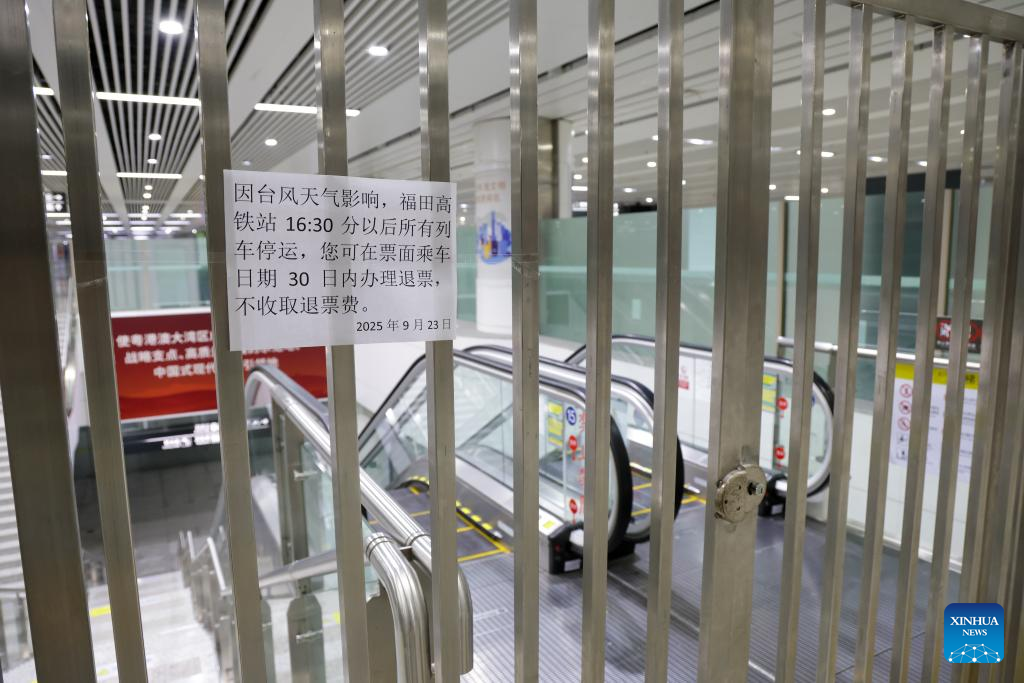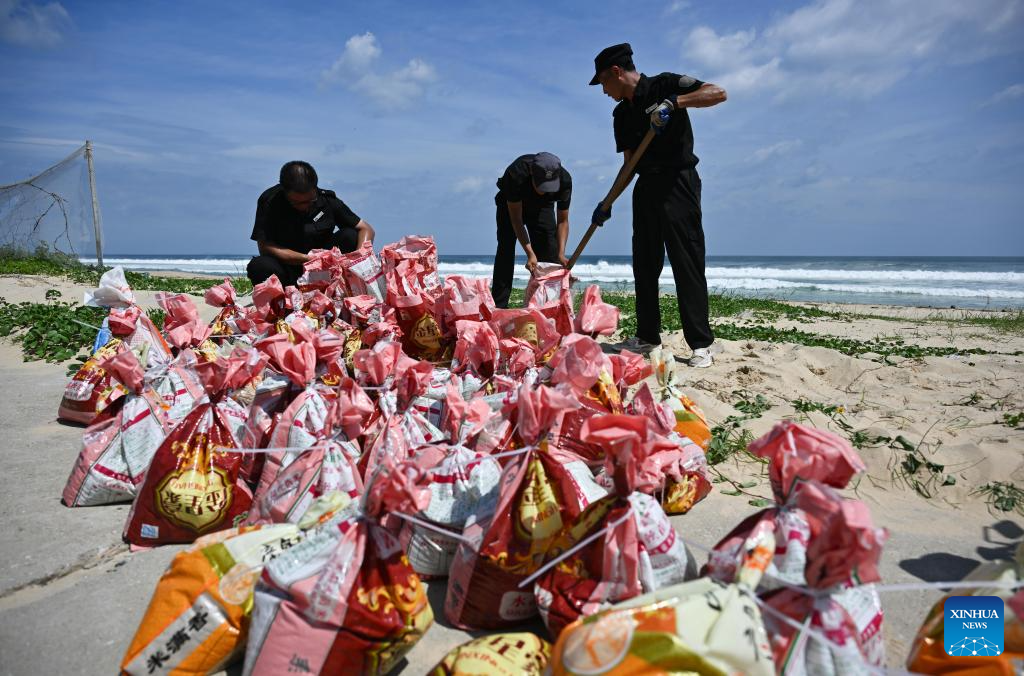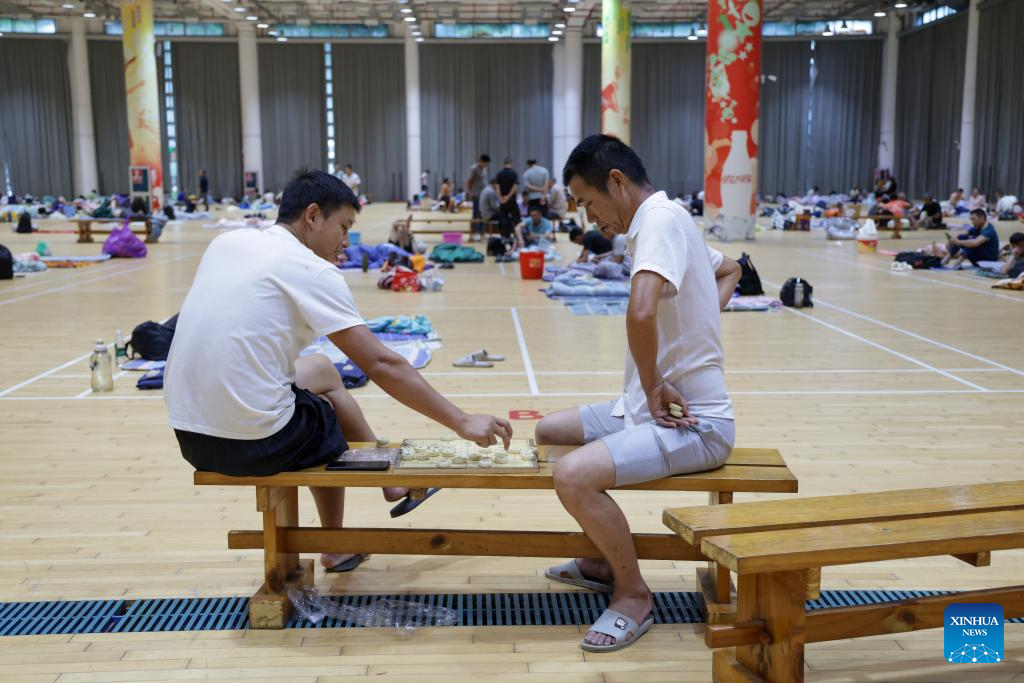
GUANGZHOU - Classes, production, public transportation and business operations were suspended on Wednesday in parts of south China's Guangdong province as typhoon Ragasa approached.
According to the flood, drought and typhoon control headquarters in Zhanjiang city, schools halted classes at around 3 pm Tuesday as a precaution. Starting at 3 pm Wednesday, work, production, public transport and business operations across Zhanjiang will also be suspended.
Noting that departments handling water, power, gas, communications, medical care and emergency response will remain operational, local authorities urged all other activities that could pose safety risks or endanger personnel to be suspended due to the typhoon.
ALSO READ: T8 to remain in force before 8 pm as Ragasa departs from HK
Typhoon Ragasa, the 18th typhoon of the year, entered the South China Sea late Monday and was located about 170 km southeast of Yangjiang City at 10 am Wednesday. It is forecast to move northwest at 20 km per hour and make landfall on Wednesday evening along the coastal areas between Yangjiang and Zhanjiang.
China's National Meteorological Center maintained an orange alert, the second-highest in China's four-tier color-coded weather warning system, on Wednesday as the typhoon is expected to bring heavy rain and strong winds.

Over 1 million relocated in Guangdong
Guangdong province raised its typhoon emergency response to the highest level at 10 am Tuesday, as Typhoon Ragasa is forecast to make landfall along the central or western coastal areas of the province on Wednesday.
Over 1.04 million people had been relocated across the province by 5:30 pm, the Guangdong provincial emergency management department said on Tuesday. Meteorologists have warned that Ragasa, which has strengthened into a super typhoon, could be the most powerful typhoon to hit China this year.
READ MORE: HK races to fortify coast as Super Typhoon Ragasa nears
So far, 80,231 fishing boats have been secured in ports, and 12,246 offshore workers are taking shelter onshore across the province.

Typhoon Ragasa -- the 18th named storm of the 2025 Pacific typhoon season -- was located approximately 445 kilometers southeast of the city of Yangjiang, Guangdong province, at 8 pm Tuesday, packing winds of up to 55 meters per second at its center, according to the National Meteorological Center. It is forecast to move northwestward at speeds of about 20 kilometers per hour while weakening.
The typhoon is expected to land in the coastal areas from Zhuhai city to Xuwen county on Wednesday, according to the provincial meteorological observatory.
The typhoon is expected to bring rainstorms and strong winds, with some areas facing extreme precipitation, while regions directly in the path of its center could experience gusts of up to 60 meters per second.
Some regions in eastern Jiangsu and Anhui provinces will also experience heavy rainfall due to the typhoon's influence, according to the National Meteorological Center.
READ MORE: Zijin Gold delays $3.2b IPO as typhoon pummels Hong Kong
Chinese authorities on Tuesday allocated some 60,000 items from central disaster relief supplies to Guangdong. The disaster aid package, comprising tents, folding beds, summer quilts, emergency lighting and family emergency kits, will support local disaster relief efforts and assist those affected.
The Guangdong provincial flood, drought and wind control headquarters have urged all localities and departments to act with the highest standards, strictest requirements and most concrete measures, and have ordered major affected areas to suspend classes, work, production, public transportation and business operations. More than 10 cities, including the provincial capital of Guangzhou, Shenzhen, Zhuhai, Dongguan, Zhongshan and Jiangmen have implemented these suspensions.

Authorities in Zhuhai have imposed citywide traffic controls since 9 pm Tuesday, barring all non-emergency vehicles from roads and urging residents to stay indoors.
Authorities in Guangdong have mobilized tens of thousands of personnel and suspended 210 passenger ferry services in anticipation of torrential rains and intense winds.
The Guangdong fire and rescue corps has placed 38,000 firefighters, more than 5,700 fire trucks and 1,174 boats on standby. Transport authorities at the provincial and prefecture levels have coordinated more than 11,000 emergency response workers, and the provincial telecommunication department has placed nearly 9,000 repair workers on standby in major cities of the Pearl River Delta and western Guangdong.
By 11 am Tuesday, 10,398 vessels off the coast of Guangdong had returned to appropriate waters to shelter from the typhoon.
The Shenzhen branch of China National Offshore Oil Corporation (CNOOC) has put its 31 offshore platforms in the eastern South China Sea into "typhoon-production mode" -- unmanned, satellite-controlled operations that maintain oil output while keeping crews safely onshore.

By Monday evening, the company had carried out 290 helicopter flights and 12 vessel trips to evacuate all 5,192 offshore personnel. Every rig is now either in port or safely anchored to ride out the storm, said Qiu Zhimin, emergency manager at CNOOC Shenzhen.
Some highway sections and bridges in Zhuhai have been closed, and the Zhuhai Port of the Hong Kong-Zhuhai-Macao Bridge has suspended outbound passenger clearance, with the main bridge closed simultaneously.
In Zhuhai's Xiangzhou district, evacuations are underway along Qinglyu Road, targeting seafront high-rises and ageing estates that bore the brunt of Typhoon Hato in 2017, when driving rain and seawater backflow ruined facades and flooded underground garages.
Weather forecasters warn that Typhoon Ragasa, coinciding with an astronomical high tide, could match or exceed Hato in intensity. On Monday, district authorities ordered all residents and tourists in coastal, hillside, and low-lying areas to move to shelters or higher ground by 6 pm Tuesday. The city has already temporarily shut down schools, factories, businesses, transport and ports.

The neighboring Guangxi Zhuang autonomous region is next in the storm's path. The regional meteorological bureau expects Ragasa to cross into the region between Yulin and Beihai cities during the early hours of Thursday, or curve westward along the Beibu Gulf coast. At 11:00 am Tuesday, Guangxi raised its typhoon emergency response to Level III.
All passenger and ferry ships in the coastal waters of Guangxi have been suspended.
Maritime authorities in Guangxi's Beihai city have restricted the Beihai-Weizhou island passenger ship route to disembarkation only, with no boarding allowed, and the evacuation of the remaining 6,000 tourists from Weizhou island to Beihai is scheduled for completion on Tuesday.
Guangxi Power Grid has gone on full war footing ahead of the typhoon, with over 300 repair teams comprising more than 6,000 staff, alongside more than 3,000 mobile generators, 27 water-pumping units, and around 800 lighting sets kept ready to minimize damage.
Typhoon Ragasa is also expected to impact the island province of Hainan, with the provincial capital Haikou to suspend classes, ferry services, park operations, work and business activities starting later on Tuesday or Wednesday. All train services to and from the island will be canceled on Wednesday.
China has a four-tier emergency response system, with Level I being the most severe response.


